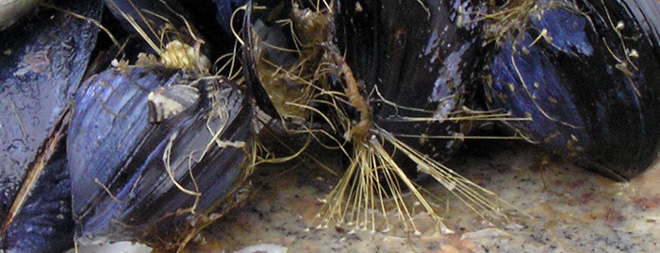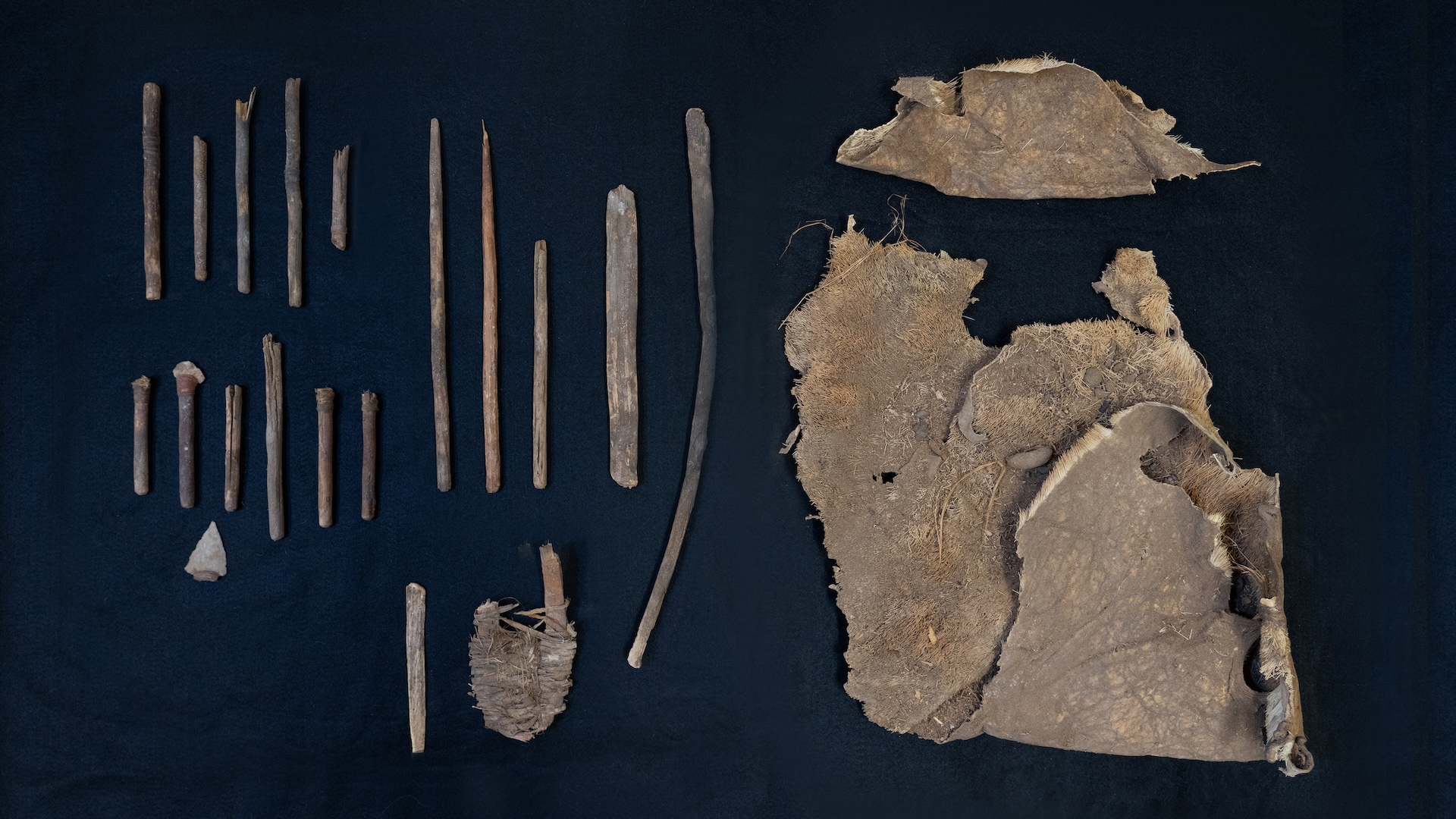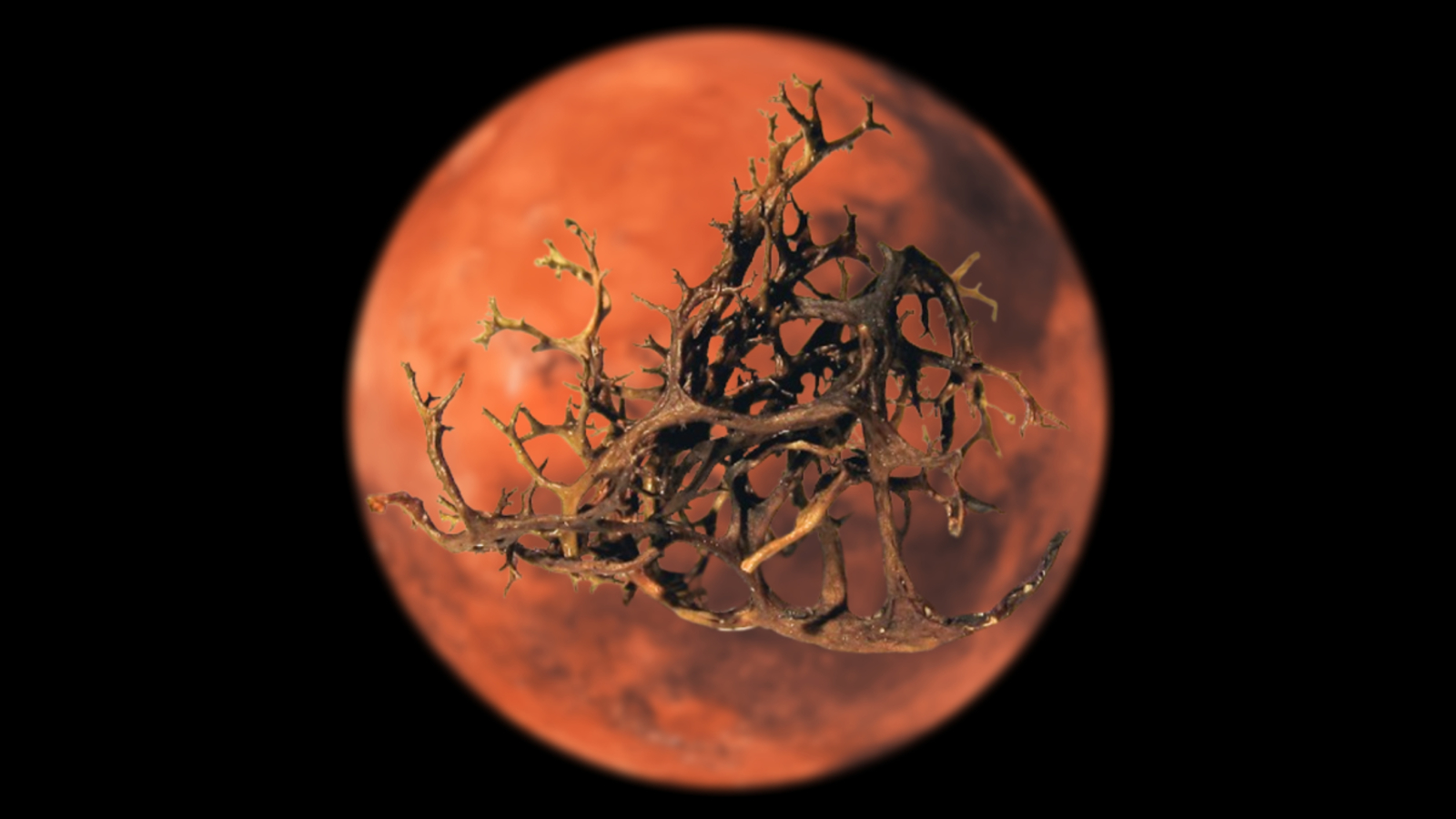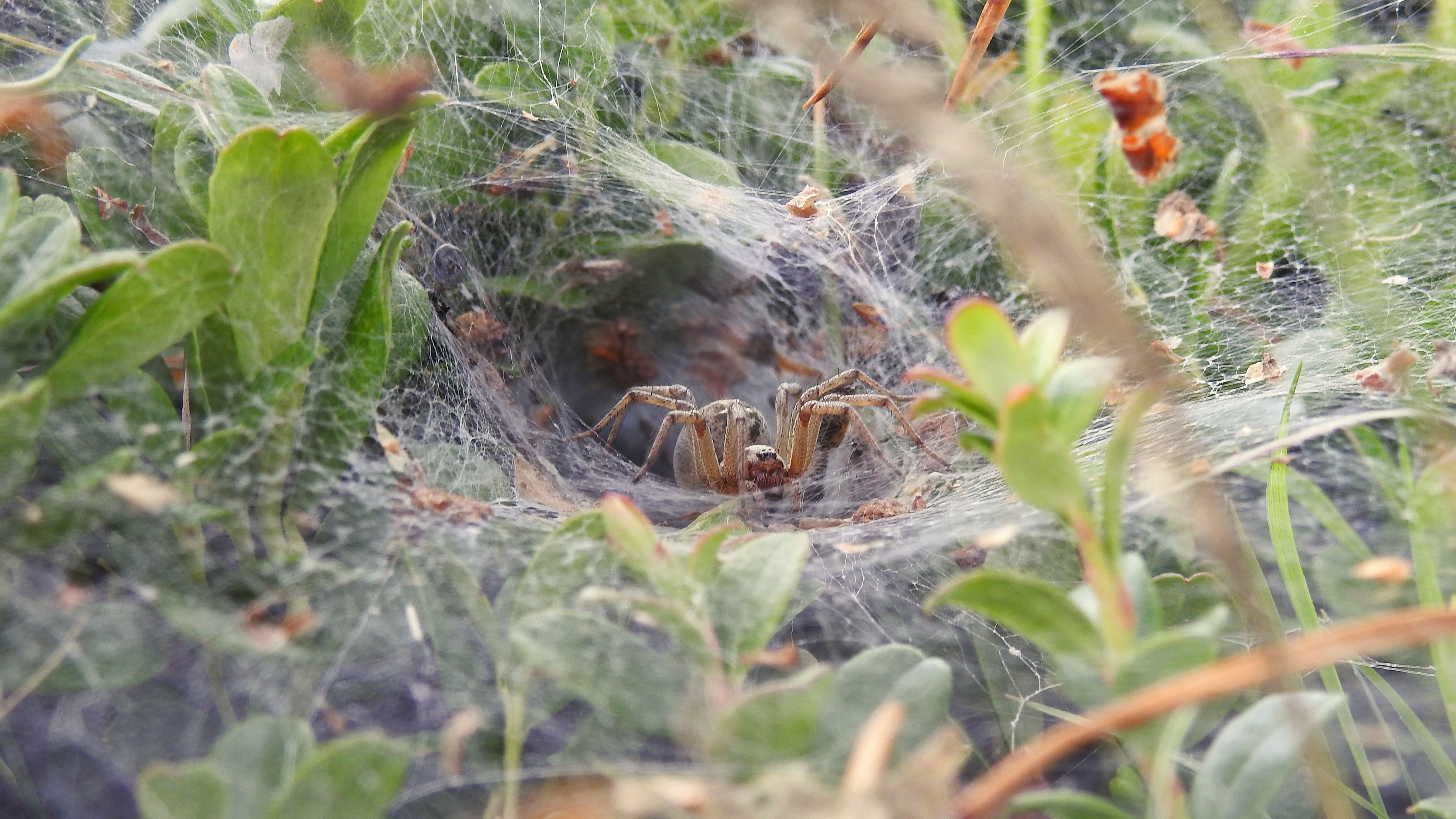Mussels' Stickiness May Lead to Smarter Medical Glues

(ISNS) -- Mussels may be tasty, but for a growing set of researchers, they are also an inspiration. Their bodies spin out a fine silky thread that helps the creatures hold tight onto rocks, ship hulls, and even whales. Researchers believe that sticky substance can offer important insights for developing new adhesives.
Emily Carrington, a marine ecologist at the University of Washington's Friday Harbor Laboratories on San Juan Island, has worked on the biology of mussel fibers for years. She noticed that natural mussel populations had a difficult time clinging to surfaces during the warmer summer months.
"Mussel silk is a thin, collagen-like protein, which the mussels mold in their foot one strand at a time, and make many make a radial array which tethers to rocks and ropes," said Carrington.
Carrington started to look into the effects of warming and ocean acidification on mussels. Her lab raised mussels in different water and pH conditions for six weeks and then used a special materials testing machine known as a tensometer, which is typically used to testing rebar or concrete, but in this case tested the strength of the mussels' silk-like threads, called byssus – including the glue it uses to attach to the rocks.
In research presented last month at the Third International Symposium on the Ocean in a High CO2 World, Carrington's lab found that in water with a pH more acidic than 7.6, the mussels' glue was significantly weakened. They also found that higher temperatures weakened the byssus fibers, with threads about 60 percent weaker in 77 degree Fahrenheit water than in cooler 65 degree water.
Worldwide, raising mussels are a $742 million business, so understanding exactly how they come unglued is important to the aquaculture industry, said Carrington.
"Farmers would want to have farms in areas that are prone to mild warming events, because slightly warmer water makes the mussels grow faster. But put climate change on top of that, they could be pushing the animals beyond their physiological limits -- and they'll have lower yields," said Carrington.
Sign up for the Live Science daily newsletter now
Get the world’s most fascinating discoveries delivered straight to your inbox.
All this could be put to good use in the field of biomaterials, which uses natural inspiration to create better synthetic materials. Carrington said she could imagine a mussel-based glue that could stick tight or fall off, based on the local acidity and temperature environment.
"Say you've got something tethered with lots of sutures, like closing an incision after surgery. You want those sutures to be tight at first, but to go away eventually. In the case of the byssus, we've found some conditions keep those threads durable and others cause threads to fail. Sometimes we want things to hold strongly - but by varying the pH locally, we could make it removable when it was no longer needed," said Carrington.
The mussel has been a favorite of materials scientists for years because of the long-standing problem of gluing two set surfaces together, said Phillip Messersmith, a materials scientist at Northwestern University in Evanston, Ill.
"Adhesion to wet surfaces has forever been a difficult proposition, and yet here's this organism that has evolved approaches that can master this problem," said Messersmith.
Messersmith has teamed up with biochemist Herb Waite of the University of California, Santa Barbara, to understand the exact proteins involved in the natural mussel glue, and to develop synthetic materials that use the same principles. Waite has found a unique and rare amino acid, called DOPA, which gives the mussel its stickiness.
"DOPA works like superglue or epoxy: it starts out liquid and them forms a solid mass," said Messersmith.
Messersmith is looking into several biomedical applications for the glue, including as a sealant for fetal surgery. To operate on any part of the fetus, surgeons must first penetrate the amniotic sac, and that often doesn't repair well or hold the suture, which can lead to leakage, premature birth, infections and other complications. Mussel-based glue could have a big impact there – though Messersmith said that the current synthetic materials aren't yet strong enough.
Additionally, there is more work to be done on the natural material. "Being inspired by biological material, you're sort of working in the dark if you don't have a full understanding of the native tissue, and I think that's a stage we haven't yet reached. On some level, we're still guessing about how to design our synthetic materials because we don't fully understand the native system," said Messersmith.
Katharine Gammon is a freelance science writer based in Santa Monica, Calif., and writes for a wide range of magazines covering technology, society and animal science.
Inside Science News Service is supported by the American Institute of Physics.










